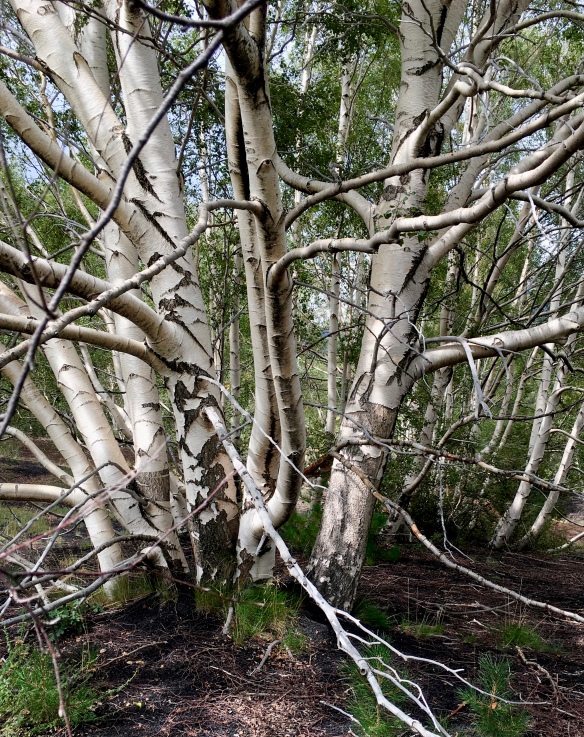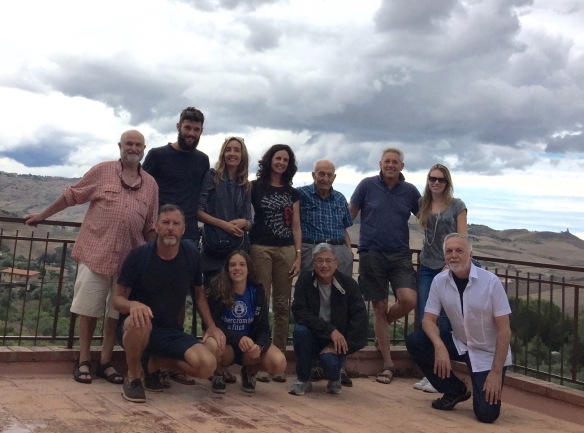The city layout of Palermo is what Shanghai should have been, a wide grid of smart boulevards enclosing neighborhoods that have, except for an ineffective dollop of asphalt, changed little in 100 years. I know this involuntarily from a premature left turn that Rick made when his navigator misread our map while seeking our classy hotel. We miraculously wound our way to the Palermo Cathedral, where Via Vittorio Emanuele, our hotel’s street, was closed to auto traffic. Our persistent navigator pleaded our case to a helpful traffic cop who allowed Rick to drive down the street with the unnecessary caution (one hopes) don’t hit anyone. (OK, she only spoke Italian, so how would I know? But that’s the Italian driving rule, no hit, no foul.)
As always, images will enlarge if clicked on.
We did a rapid check-in to drop off our luggage before returning the car about a mile away, allowing us to enjoy a sunny Friday afternoon stroll up the Via Maqueda, which on our return was also closed. Palermo is a city for people, not cars, and Friday is party day. The people are purposefully dressed for social social interactions.
To illustrate the resistance of Palermo to the demands of modern life, I took a short video of an intersection behind the Cathedral during a late-night celebration. This nest of capillaries is fed from the wide arteries of city planning. When driving around the city, stay on the broad streets as long as possible; the capillaries are not for American cArpuscles.
American movie entertainment, like The Godfather, gives one an impression of crime bosses, pickpockets, and corruption. Instead, I saw smiling faces, calm, sincere, handsome. On our walk from the jeep drop-off, quenched by a negroni cocktail, smiling under the crystal blue sky, my street gawking was well-served by a red traffic light. A group of teens, perhaps between high school and college patiently held the curb in easy going chatter when one outstandingly attractive young woman turned to give me a warm, curious glance at an obvious tourist costumed by Palermo as if at a ball. I smiled; so did she. I mouthed the words,”very pretty,” with a simple nod. She mouthed back, in posed English, “Thank you.” The light changed. We moved on in our separate clusters, my afternoon improved by her payment to my charm deficit … a tiny bit.
At the intersection of Via Maqueda and Via Vittorio Emanuele, a few steps from our hotel, is an intersection misnamed Quattro Canti, which translates to “four corners.” In fact, there are no corners because the intersection is a circle. Even the buildings are curved to deprive any place for a corner to hide. Each building represents a season (only summer and winter are depicted below), four kings, four patrons, and the four cheeses on a quattro formaggi pizza. (The last item is a guess, but all the statues represent someone known as a “big cheese.” Such is my improved Italian.) The first two photos below are of Quattro Canti.
- Winter
- Spring
- Rod at Praetorian Fountain
- Piazza della Vergogna
- aka Square of Shame
- No Thunderbolts
- No Shame
- The square at night
Just around the corner (around the circle?) is the Fontana Pretoria where some nuns got a deal on a fountain and a clutch of naked statues. It came to be called the Piazza della Vergogna, the “Square of Shame.” The shame, it seems to me, is to have lived within modest reach of such depictions while never touching the real thing.
Shame or not, the carvings stand tall, if not erect. (Reminds me of a story an uncle once told of a racy play he saw seated in front of two church ladies who tisk’ed and condemned the on-stage pruriency, but sat until the final curtain.)
Once a religious city (in Europe, only the Vatican can claim to be stedfast), Palermo has a couple of outstanding efforts to get the attention of He who is not there.
- Rear of Cathetral
- Flying Butt to next building
- Christian and Moorish
- Unique design
- Come into the light
Palermo’s Cathedral resembles a cluster of buildings more than a unified structure. A brilliant architect made the collection warm, proud, inviting, and harmonious. With the exception of a statue of St. Sebastian, depricted with an arrow (enforcing the mafia code of silence), this is a church that fits the purpose of a city, rather than standing apart and above it.
Stephanie put the Cappella Palatina on our list of must sees. There is no escaping the long lines, but a visit to Palermo without seeing this Byzantine chapel built by Roger II of Sicily in 1132 is unthinkable. The mosaic detail covers every square inch of the surface. (An Italian named “Roger,” really? And there were two?)
- Central altar
- Apse (ebonics?)
- The crowds
- The detail
- Come on in…not
There are many other things to see in the Norman Royal Palace of Palermo that contains the Cappella, but photographs are forbidden outside the Chapel, and so with the vision of Sebastian fresh in my mind, my camera stayed protectively in my pants. The palace houses the legislative chamber of Sicily’s elected body, showing a desire to maintain local control as strong in Sicily as England, Tibet, and North Dakota.
If I were ever to return to Sicily, Palermo is a place I would stay for several nights. Perhaps what I like most is the sense that Palermo is a city complete. Cranes do not tower above the street life, in some frantic demand that something is needed to correct a bygone miscalculation. The city seems at peace with itself—justifiably. Construction suggests dissatisfaction. The desire to create a better future is often seen as optimism, but at its core, there is displeasure. Palermo has none of that. Modernity is a visitor who knows her place.
- The picture of contentment
- The via to the Cathedral at night
- Worn sandal smooth
- Layers of the past from our hotel room
- Shame be not proud
- Smartly attired, like an Italian
And that is our visit to Italy in 2016. Now home to watch Donald Trump become president. I shall never again criticize the Italians for voting for Berlusconi.


























































































 The town’s fame has been enhanced by the work of the German photographer, Wilhelm von Gloeden, who photographed many nudes, mostly male, in the early 20th century. Today, he could spend three life sentences in an American prison for having models who were younger than 18, though in Europe, he’s considered an artist.
The town’s fame has been enhanced by the work of the German photographer, Wilhelm von Gloeden, who photographed many nudes, mostly male, in the early 20th century. Today, he could spend three life sentences in an American prison for having models who were younger than 18, though in Europe, he’s considered an artist.















































































































